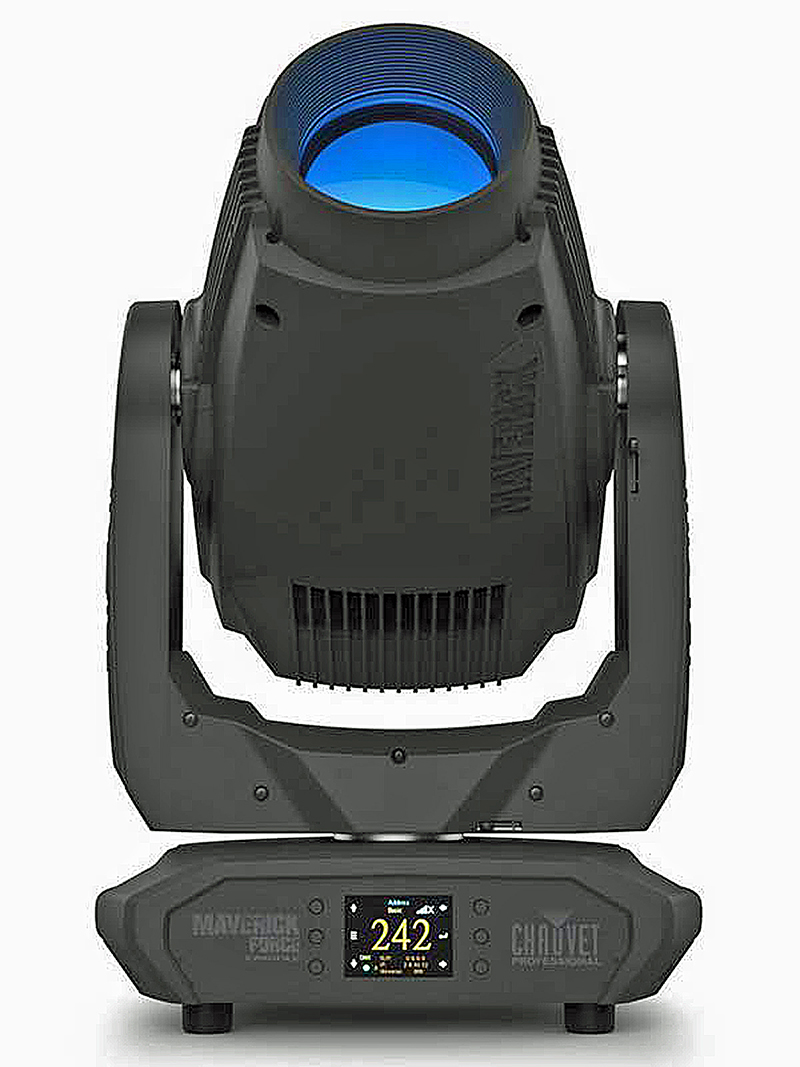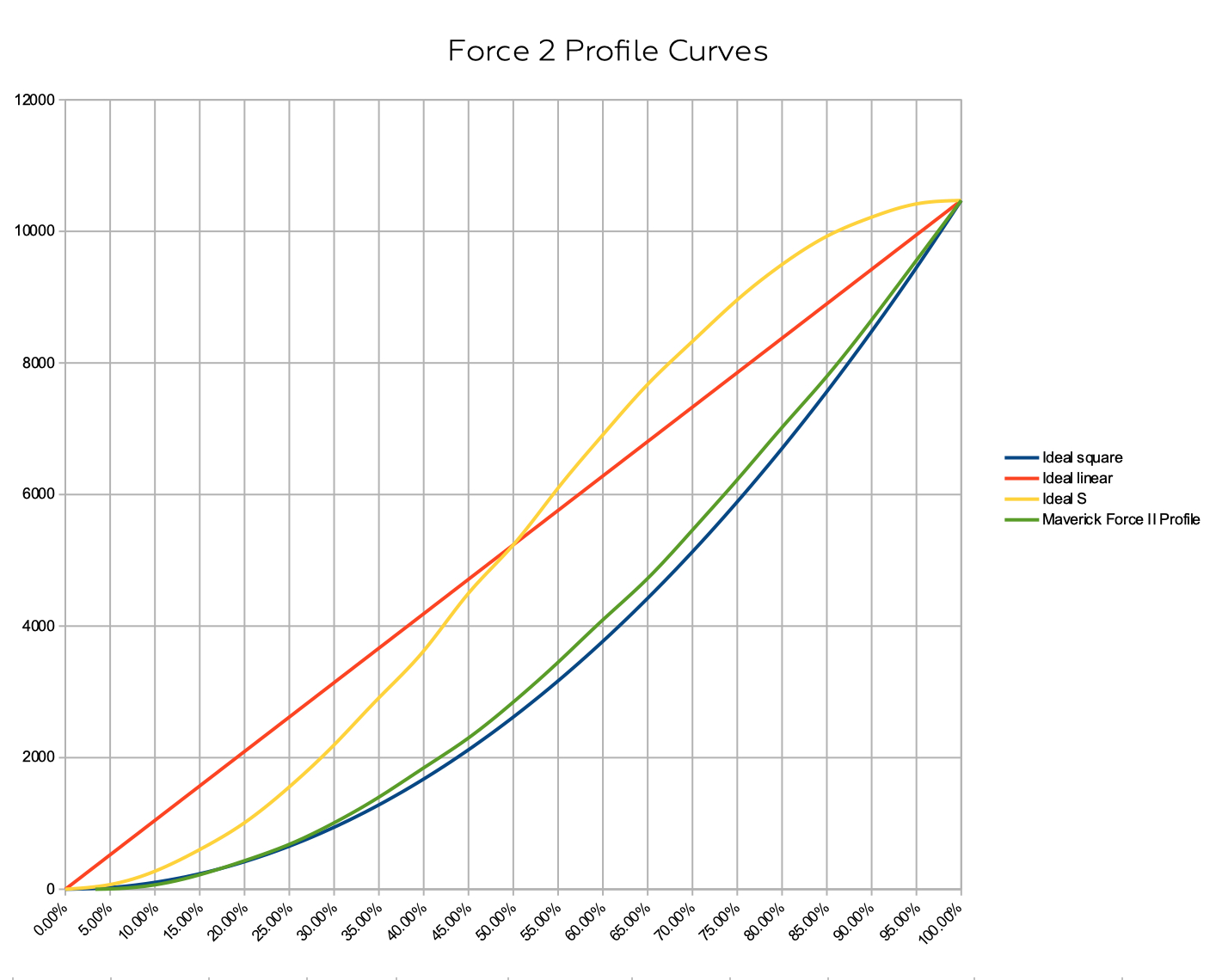
It seems we have reached the point where I no longer expect that any intelligent light will be sent to me containing an arc lamp. Certainly, this moment seems to have been a long time in coming; the only fixtures that have come across my desk in the last few years have been of the “long-throw extremely narrow beam” variety, and there have only been a few. Barring some unlikely breakthrough in materials science, the trajectory of the industry is likely to remain on its current course. The question of just how bright LED arrays can get is an interesting one, but for the moment, we haven’t come close to the theoretical maximum. Chauvet Professional has been pushing boundaries with their high-quality LED-based Maverick range, and today, we’re looking at one of their latest offerings: the Force 2 Profile.

Packing a Punch
The Force 2’s light source is a 580W white LED engine from Appotronics, with a rated color temperature of 7,055K, which provides a nice crisp white light. The field itself is extremely smooth and flat, one of the advantages of LEDs for fixtures of this variety. I tested the fixture in its square law setting, which tracked an ideal square law curve quite closely. Dimming was excellent, with no stepping visible all the way down to blackout. I measured initial output at 11,350 lux at five meters at 50% zoom, which dropped to 10,180 lux after about 30 minutes. This represents a thermal drop of about 11%, which tracks other fixtures of this class. The fixture includes two fan modes, TV25 and TV35, to stabilize light output and keep fan noise constant. Like several other fixtures in the Maverick range, the Force 2 has a feature called “Virtual Strobe” wherein the fixture divides up its LED array into sections that it then controls the intensity of individually, leading to a “shifting” effect. This effect’s speed and fade can be adjusted by the user. Further, the PWM frequency of the LED array is variable in steps between 600Hz and 15,000Hz to help solve camera banding issues. The fixture is capable of a variety of strobe effects, from 0 to 20Hz, including random strobes, synchronous strobes and pulses.
The effects for this fixture are housed on three separate, removable modules. First in line past the LED array is the color-mixing module. The system operates in the method that seems to be becoming an industry standard — a pair of glass flags with finely etched dichroic color closes like a curtain across the light beam. All color mixing systems of this sort are susceptible to color unevenness in the projected beam, and this can be exaggerated by position of the focus lenses. Despite that, this mix system does a great job avoiding that unevenness except at extreme focus settings, likely owing to the color module’s placement close to the LED array. The system handled difficult-to-mix colors like light peach and aquas well, though saturated reds came out a touch on the amber side. The Force 2 includes a fixed red filter to help get deep, rich reds when needed. Also included is a CTO filter, which adjusts the light smoothly down to 3,600K with the filter fully in. With the CTO and CRI filters in at the same time, this value drops to 2,900K.
The next module houses the gobo carriages and fixed color wheel. There are two gobo wheels, each with seven patterns plus open, all of which are rotatable and indexing. To my eye, there’s a mix a gobos that would serve acceptably in both an aerial beam and scenic projection role, including two colored gobos. All of the gobos are glass and ride in the familiar “slot and lock” carriage system, and replacing them does not require the module to be removed. Focus was quite good, with nearly imperceptible center-to-edge differences. One interesting feature that Chauvet has introduced here is color correction for gobos. Gobos often drop the color temperature of a light’s output when the additional glass is in the optical train. The Force 2 (by default) drops the CTB color filter on the color wheel in to help correct this, though this option can be disabled. The color wheel of course functions normally on any value other than zero with a gobo inserted. Gobo rotation was perfectly smooth down to incredibly slow speeds, and changes between adjacent gobos happen almost instantaneously.
Color and Framing
Also on this module is the fully indexable fixed color wheel, with seven colors plus open. Space between adjacent filters is very small, and quite acceptable half colors can be produced. These filters are glued in place and are not intended to be user-replaceable. Further, there’s the aforementioned CTB filter, along with a “CRI” filter. These filters are a staple of intelligent lights that use phosphor-converted, blue-pumped LEDs, smoothing the spectrum and improving color rendering. Naturally, this decreases the output a small amount, but for situations where accurate color rendering is vital, this might be a good trade-off.
Next in line is the framing module. Each blade is capable of fully covering the beam, with the correct adjustment. Insertion is nearly instantaneous, with a nice range of adjustment possible for shaping the beam to perfectly hit scenery or performers. The entire module rotates ±60° (for a total of 120°), a step up from the standard rotation range of 90°, and a full-range rotation takes approximately 1.5 seconds.
The fixture comes equipped with what Chauvet calls a frost, but I think I would call it more of a contrast reducer. It does not immediately soften the edges of an inserted gobo; instead, it lightens the dark areas while leaving edges intact. When fully inserted, however, the edges of gobos disappear in what is almost a wash effect. Insertion of this filter is almost instantaneous. Finally before the output lens group is a five-facet prism, with a square center section with four trapezoid-shaped wedges around it. This is rotatable and indexable, with nearly instant insertion, and provides nice image separation. Zoom ranges from 6.8° to 55.9° and covers its range in less than a second. Also available is an iris for further beam reduction. Pan and tilt ranges are 540° and 270° respectively. Pan covers a full-range movement in approximately 3 seconds, while tilt takes about 1.5 seconds. Both ranges are extremely smooth at all speeds, with no noticeable jitter.
Power in is via a Seetronic True1-style input, and auto-ranges from 100-240VAC. Data in is via 3 and 5-pin XLR DMX inputs and pass-throughs, and Amphenol XLRnet RJ45 inputs and pass-throughs for sACN, or Art-Net data, and the fixture also includes a built-in W-DMX receiver. The Force 2 takes 1:15 from a cold boot to final output, and resets are well-behaved in that the fixture blacks itself out before moving and does not come back up until it’s in position. Pan and tilt locks are included. A color touchscreen is provided for setting fixture options and personality, and rigging is via standard Omega brackets fitted with your choice of mounting hardware. The fixture stands 26.3” (670mm) tall with a base 15.5” (394mm) by 10” (254mm) and weighs 57.3 lbs. (26 kg).

At a Glance:
Adding Depth to the Team
Chauvet Professional’s full-featured and compact Force 2 profile fixture adds depth to the company’s the high-quality Maverick line with a nice expanded rotation range of the framing shutter system and the evenness of the color mixing. With a variety of dynamic effects and weighing in at under 60 pounds, this is a very usable light.
Maverick Force 2
PROS: Color mixing, effects are all smooth and high-quality
CONS: Fade-out and fade-in on a reset would be helpful
FEATURES
- Full featured, compact profile fixture
- CMY + CTO color mixing
- CRI and CTB filters on color wheel
- 16-bit dimming
- DMX , WDMX, sACN, Art-Net, RDM control options
SPECS
- Lamp Source: 580W Appotronics white LED engine
- Color Temp: 7055K
- Total Wattage: 650W
- Zoom Range: 6.8°-55.9° (8:1)
- Frost and Iris: Yes
- Color Mixing: CYM flags
- Color Wheel: 7 plus open
- Prism: 5 facet, wedge shaped
- Gobos: 2 wheels w/7 rotatable gobos each
- Framing System: 4 blade ±60° rotation
- Size: 26.3” H, 15.5” x 10” base
- Weight: 57.3 lbs.
- MSRP: $8,571.43
- MAP: $7,600
Manufacturer: Chauvet Professional
More Info: www.chauvetprofessional.com


